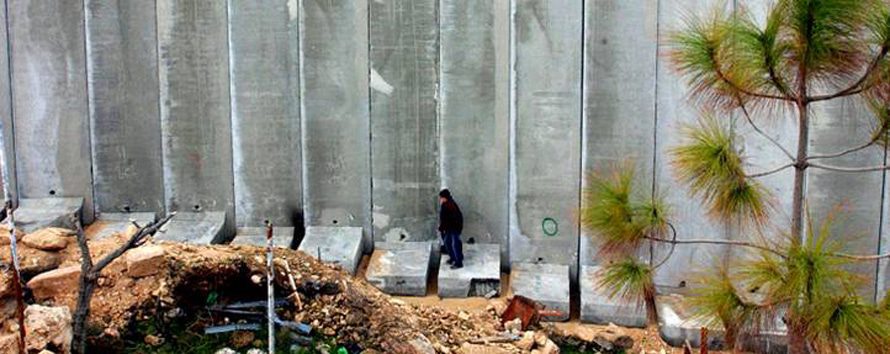In this Special File, Fanack presents in-depth insight into several topics concerning the conflict, including Arab-Israeli negotiations, Arab-Israeli wars, Palestinian refugees, and Israeli settlements

Introduction
Ever since Great Britain, during the early 20th century, promised the Jews a “national home” in Palestine, even though the overwhelming majority of the existing population consisted of non-Jews (Palestinians), the seeds for an ongoing conflict have been sown.
With the support of the British mandatory during the British Mandate of Palestine, the influx of Jewish settlers into Palestine increased. During the United Nations mandate of Palestine, a partition plan on the basis of which the mandate of Palestine would be divided into a newly established Jewish state and an “Arab” state was presented.
The approval of this resolution by the UN General Assembly paved the way for the establishment of the state of Israel in 1948. Meanwhile, a sophisticated campaign of ethnic cleansing of the Palestinian population was underway, which was meant to ensure that the demographic structure of the new state would favour Jews. These events, which Palestinians call the “Nakba” (catastrophe), led to a huge exodus of Palestinians from their homes and their displacement to other parts of Palestine and neighbouring countries.
June War of 1967
During the June War of 1967, Israel conquered the West Bank, East Jerusalem, Gaza, and the Golan Heights, territories where the settlement of Jews from all over the world was encouraged, at the expense of the remaining Palestinian population. Israeli jewish settlements were erected with the support of the state of Israel, leading to an increase of the Israeli jewish population in the Palestinian territories (West Bank, including East Jerusalem) from 600 Israli settlers in 1968 to more than 550,000 in 2015, according to the Humanitarian Atlas of the United Nations Office for the Coordination of Humanitarian Affairs (UNOCHA) in Palestine.
These Israeli settlements in the Palestinian territories, illegal under international law, are widely considered a major obstacle to peace between Palestinians and Israelis, as their encroachment on Palestinian land is an obstacle to the establishment of a viable Palestinian state with pre-1967 borders.
Other obstacles to peace between Palestinians and Israelis are the status of Jerusalem, the right of return for Palestinian refugees to their homes in Palestine, and the release of Palestinian prisoners from Israeli jails.
Oslo Accords & Two-State Solution
In addition, since the Oslo Accords of 1993 and 1995, which divided the West Bank into areas A (Palestinian control), B (Israeli military control, Palestinian civil control) and C (Israeli control) and created the Palestinian Authority, Israel has created irreversible facts on the ground for the sake of its settlement project.
By creating a segregated system of roads and closures, building the Separation Wall (parts of which run deep into the West Bank), and expanding settlements in strategic areas, Israel has rendered unattainable the territorial continuity of a future Palestinian state. The Separation Wall has created severe restrictions on the movement of Palestinians and has further reduced the land available to them.
In Area C, which covers more than 60 per cent of the West Bank, Israel retains nearly exclusive control, including of law enforcement, planning, and construction. 70 per cent of Area C is included within the boundaries of Israeli settlements, and Palestinian use and development are heavily restricted in the remainder of the area.
Despite many rounds of negotiations between Palestinians and Israelis under the auspices of several parties, including the United States, the two sides have failed to reach a resolution of the conflict. The so-called two-state solution (a viable independent Palestinian state bordering the state of Israel), which is the option preferred by the international community, is, in 2015, further away than ever.
In the Gaza strip, from which Israel withdrew its settlements in 2005, the situation remains dire. Since 2007, the Hamas-ruled Strip has been under Israeli siege, leading to severe shortages of food, construction materials, and medical supplies. According to UNOCHA, 57 per cent of the population in the densely populated Strip is food insecure and unemployment is high, at about 44 per cent.
Due to the Israeli blockade, Gazans are prohibited from entering the West Bank and from seeking work in Israel. Commercial fishing may not be carried out beyond six nautical miles from the coast, leading to decreased revenues and increasing unemployment.
Meanwhile, Israel, tolerated by the international community, continues to expand its settlements on the West Bank and in East Jerusalem while denying Palestinians their inalienable rights, such as the right of return and the rights to national independence, sovereignty, and self-determination.
With a history of decades of Israeli occupation of Palestine and Palestinian frustrations sparked by the role of the Palestinian Authority as facilitator of the occupation, increasing tensions over sovereignty in the Old City of Jerusalem led Palestinians to increase their resistance against the Israeli occupation in the autumn of 2015, leading to what some have dubbed the “Third Intifada.”
Widespread protests leading to violent clashes with the Israeli security forces were accompanied by almost daily stabbings or attempted stabbings of Israelis by young Palestinians in both the West Bank and Israel. According to UNOCHA, between 1 October and 30 November, 103 Palestinians, including 23 children, were killed during shootings and other clashes with Israeli security forces. During this period, 17 Israeli citizens were stabbed to death.

